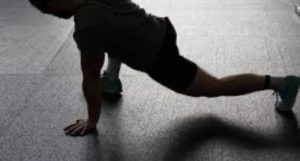Acute Effect of Dynamic Stretching on Endurance Running Performance in Well-Trained Male Runners
Taichi Yamaguchi, Kazuki Takizawa, Keisuke Shibata
Journal of Strength and Conditioning Research 2015, 29 (11): 3045-52
The purpose of this study was to clarify the acute effect of dynamic stretching (DS) on relative high-intensity endurance running performance. The endurance running performances of 7 well-trained middle- or long-distance male runners were assessed on a treadmill after 2 types of pretreatment. The pretreatments were nonstretching (NS) and DS treatment. In the DS treatment, DS was performed as 1 set of 10 repetitions as quickly as possible for the 5 muscle groups in lower extremities. The endurance running performances were evaluated by time to exhaustion (TTE) and total running distance (TRD) during running at a velocity equivalent to 90% maximal oxygen uptake (VO2max) in each subject. The oxygen uptake (VO2) during running was measured as an index of running economy (RE). The TTE (928.6 ± 215.0 seconds) after DS treatment was significantly (p < 0.01) more prolonged compared with that (785.3 ± 206.2 seconds) after NS. The TRD (4,301.2 ± 893.8 m) after DS treatment was also significantly (p < 0.01) longer than that (3,616.9 ± 783.3 m) after NS. The changes in the VO2 during running, however, did not significantly (p > 0.05) differ between the pretreatments. The results demonstrated that the DS treatment improved the endurance performance of running at a velocity equivalent to 90% VO2max in well-trained male runners, although it did not change the RE. This running velocity is equivalent to that for a 3,000- or 5,000-m race. Our finding suggests that performing DS during warm-up before a race is effective for improving performance.
Link to article https://read.qxmd.com/read/25932984/acute-effect-of-dynamic-stretching-on-endurance-running-performance-in-well-trained-male-runners
Discussion by Dr. Mark Rathjen PT DPT CSCS.
The purpose of the above study is to prove or show correlation of performance improvement after dynamic stretching. In this particular group, we saw the testing of 3000-5000m distance runners. This is considered long distance by aerobic studies, though ultra runners may disagree. Interesting, performance was increased during the aerobic style exercise with minimal dynamic stretching of the BLE during 10 reps of 5 lower body stretches.
These stretches were performed dynamically. This means stretching with movement. Moderate paced dynamic stretching throughout the given range of the limb/torso. The stretches used or variations are not the take home message. The real discussion comes to fruition here. Dynamic stretching increases performance. We have proved this theory in science with force output, and anaerobic sports. More evidence is showing endurance events are also doing themselves a dis-service by not utilizing them more often.
The key components to a stretching routine pre aerobic exercise is multi-faceted. Focusing on hip flexors, hamstrings, hips, gastric/solues and glutes in functional patterns and capacities is the key. A moderate rhythm given in a range of motion is paramount. If possible, warm up for 3-5 min before stretching. If warmups are not possible, the stretching should start very gentle, and become more moderate and aggressive as you complete more repetitions.
Take home message in Omaha? Dynamic stretching is worth your time!!!
Happy Stretching.
Below is a Youtube link to our CORE DSS1 stretching video.

